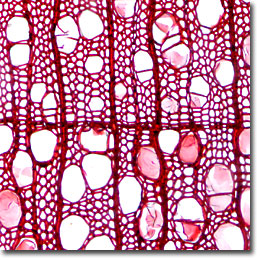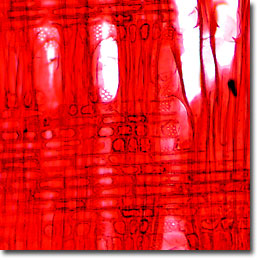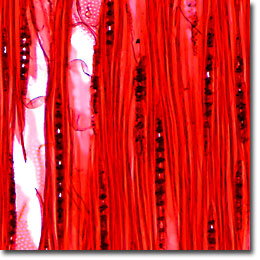The Black Willow
The Black Willow (Salix nigra) is a hardwood tree that is distributed widely in North America and throughout the eastern United States. These trees grow well in cool soils and temperate climates with their trunks reaching heights up to 40 feet high and having a scaly bark that often becomes very rough. Black willow trees are well known for their ability to assist in preventing erosion, and often naturally keep many river and creek banks from washing away. The sapwood is white, while the heartwood ranges from light brown to pale reddish or grayish brown in color, frequently with darker streaks along the grain.

Cross Section

Radial Section

Tangential Section
A member of the Salicaceae family, which is a very large group of quick-growing deciduous shrubs and trees, black willows are one of about 300 similar species and natural hybrids that have been classified. In fact, there are so many natural and induced variations in this family that exact identification of willows is often difficult even for experts. These trees reside chiefly in the cooler parts of the North Temperate Zone, with a few being found in the Southern Hemisphere.
Willows readily adapt to very wet soils, but also prosper in many dryer regions and are very easy to transplant. In fact, new growths can often be initiated starting from dormant branches (of up to two years growth) simply by projecting the branch into moist soil in the early spring.
Willow trees have long seeds with silky hairs that help in the natural dissemination, especially in their native habitat along watercourses. Black willow wood is used for boxes, crates, woodenware, and novelties. Charcoal resulting from destructive distillation of black willow wood is especially suitable for black-powder manufacture.
Microscopic examination of iron-alum hematoxylin and safranin stained thin sections (see the digital images presented above) reveals a diffuse and porous wood having simple perforation plates and abundant parenchyma. The vessel size is diverse with inter-vessel pits being 6 to 10 micrometers in diameter and orbicular to oval or angular (through crowding) in shape. Libriform fibers are moderately thick-walled and medium to coarse in texture. The rays are unstoried, heterocellular, and uniseriate.